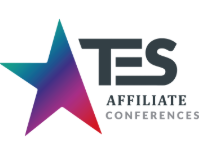Porn Becomes Truly Academic for Some Colleges
UNITED STATES — While the Federal government cooks up new ways to squash speech it believes to be obscene and promotes publicly funded elementary and high school courses packed with creation science and abstinence-only agendas, a quiet revolution is building in the country’s universities. The latest academic subject to be embraced by colleges is pornography.While some may scoff at the idea that universities address the issue of erotic materials, students and instructors alike believe the topic is an important one.
“I was amazed by how much the students know about pornography but how little they knew about how to think about it,” Jay Clarkson, a graduate student in communications observed. Clarkson is responsible for the University of Iowa’s Pornography in Popular Culture class, introduced last fall.
In addition to the University of Iowa’s course, the State University of New York at Buffalo has offered Cyberporn and Society, the University of California, Berkely, has required students of its Cinema and the Sex Act to watch NC-17 and underground stag reels, while the New York University’s Anthropology of the Unconscious course includes discussion of x-rated Japanese comic books.
Love it or hate it, college professors are increasingly agreeing that pornography can’t be ignored and, in fact, shouldn’t be. An increasing number of academics believe that investigating the social, philosophical, and artistic aspects of erotica is important and courses are appearing in a wide range of disciplines, including women’s studies, law, technology, literature, film, and anthropology. The question now is how to address this complex and controversial subject. Chief among the debates is whether students actually need to view adult materials or whether the same benefit can be gained by merely discussing them or, when appropriate, reading them or reading what others have to say about them.
Some instructors, including Berkeley’s Linda Williams, contends that the visuals are important. “I’m not trying to teach people to accept the existence of it,” she insists. “As with any tradition in moving-image culture, we need to take it seriously. We need to try and come at it with some theoretical tools.”
Williams, who became fascinated by porn while researching feminist reactions to the genre during the early 1990s, employs the readings of Sigmund Freud and Michel Foucault as part of the investigation of human desire, how porn interprets it, and what that may mean about the human psyche.
Other academics approach porn from various other directions. For instance, Alex Halavais is an assistant professor of communications at SUNY Buffalo who focuses on the vital role that adult material has played in the development of communication systems, including the telephone and the internet. His reading material includes blogs and the Congressional Record. Laura Kipnis’ offers graduate level course work in media-studies, including one focusing on obscenity. Students in her Northwestern University classes look at how Hustler Magazine, similar publications, and 16th century satirist Francois Rabelais all define class stratification.
Scholars such as UCLA psychology professor Paul Abramson consider viewing explicit material to be “unnecessary” since “most students have already seen it.” Catherine Sherwood-Puzello includes discussion of pornography in her human sexuality course work at the University of Indiana at Bloomington but doesn’t show any of it to her students, considering them to be “not a good way to explain porn.” Instead she teaches about it as though it were any other subject which goes without illustration or example. To an instructor like Kipnis, however, viewing material that some may find objectionable, like Pier Paolo Pasolini’s 120 Days of Sodom, is essential to the impact of her message concerning censorship and why some people feel strongly about it. The film has rattled students who had previously insisted upon the liberality of their views on free speech. “University students are often too cool, too hip to understand why other people get perturbed,” she explains. “Showing them a film like this allows them to react and then to take a step back and analyze their reaction with the critical tools you give them.”
Parent and student responses have been skeptical, although many have found that the approach employed belies the seeming prurience of the subject matter. Students, especially, agree that watching blue movies in a classroom provides a unique perspective – especially on subjects of special taboo within more conservative social groups, such as transgender issues and female ejaculation.
Given the current political climate, administrators are understandably nervous about course offerings such as these although they yearn for the cutting-edge reputation it can provide their learning institutions.
David Penniman, a dean at Buffalo confesses that he wishes more faculty would engage in such “exciting work,” while admitting that some of the imagery is likely to be unsettling to some students and outsiders, which complicates matters, especially at universities dependent upon government funding. Clarkson’s course on Pornography in Popular Culture, for instance, earned a threat to withdraw financial support from one Iowa state politician. Once he looked deeply enough to find that no explicit visuals were being used during the course, he dropped his drive to punish the college.









